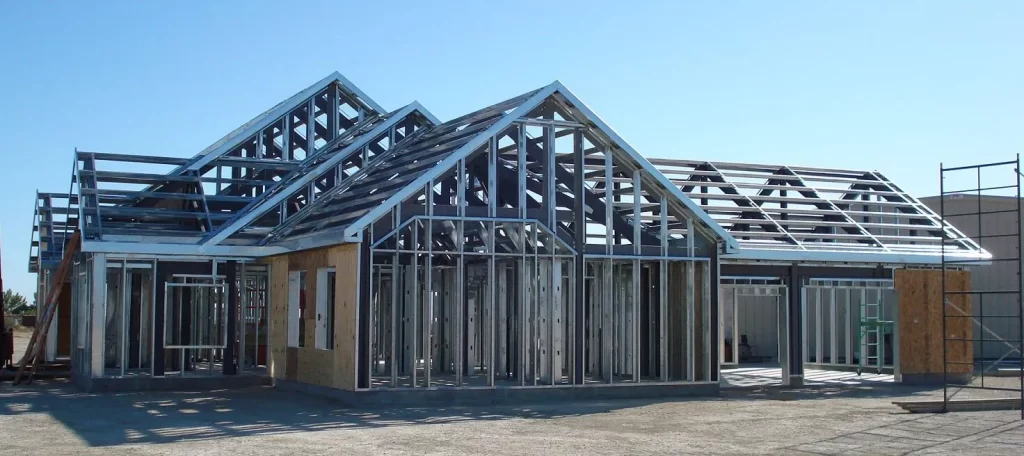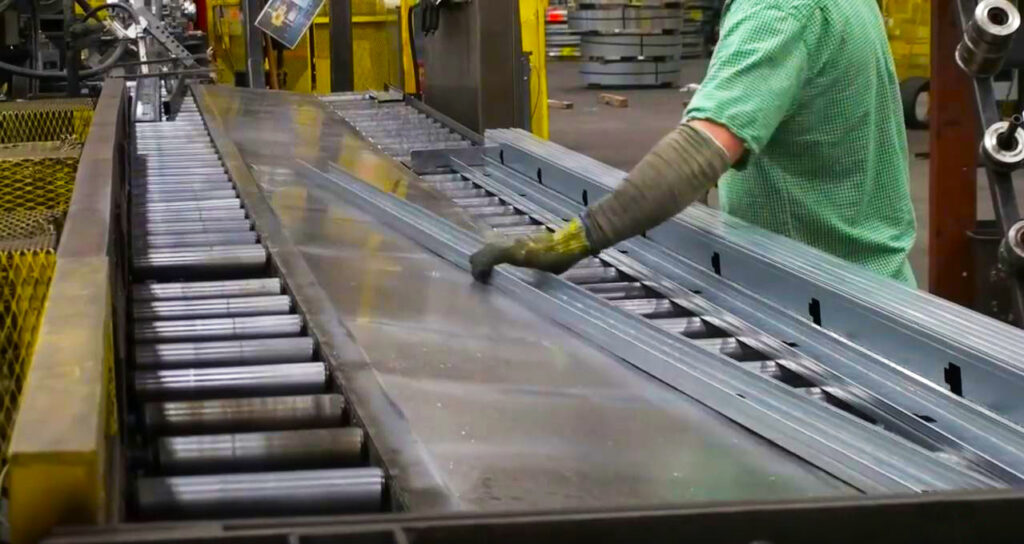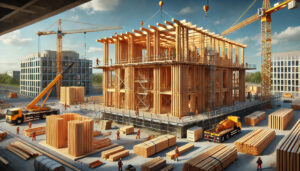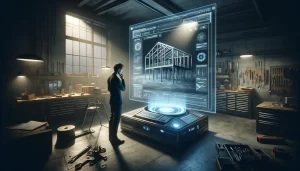Introduction to Steel Framing
In the ever-evolving landscape of residential construction, the pursuit of sustainable, durable, and efficient building methods has led to innovative approaches to traditional practices. Among these, steel framing stands out as a significant shift from the conventional wood framing, heralding a new era in home building. This article delves into the intricacies of steel framing, exploring its advantages, the types of steel employed, manufacturing processes, assembly methods, and a comparative analysis with its wooden counterpart.
Understanding Steel Framing
Definition and Scope
Steel framing involves the construction of a building’s structural framework using steel components. This method offers an alternative to traditional wood framing, bringing with it a host of benefits such as enhanced durability, strength, and environmental sustainability. Steel framing is not a novel concept; it has been extensively used in commercial and industrial construction for decades. However, its adoption in residential projects is a testament to its versatility and growing appeal among homeowners and builders alike.
Advantages of Steel Framing
The shift towards steel framing is driven by its numerous advantages over traditional materials. Steel’s superior strength-to-weight ratio allows for the construction of more robust structures capable of withstanding severe weather conditions, seismic activities, and other environmental stressors. Moreover, steel is impervious to common issues that afflict wood, such as termite infestation, rot, and mold, ensuring the longevity and integrity of the structure over time.
Environmental considerations also play a crucial role in the adoption of steel framing. Steel is one of the most recycled materials on the planet, which significantly reduces the environmental impact of construction projects. The efficiency of steel framing also contributes to reduced waste during the building process, as steel components can be precisely manufactured and assembled with minimal offcuts.
Types of Steel Used in Framing
Light Gauge Steel
Light gauge steel is characterized by its thin profile, manufactured through a cold-forming process that involves rolling or pressing steel into the desired shapes. These components are typically used for non-load bearing walls, interior partitions, and as structural elements in floors and roofs. The adaptability of light gauge steel makes it ideal for detailed architectural designs and modern construction needs.
Structural Steel
For more demanding structural applications, such as main load-bearing elements of a house, structural steel is the material of choice. This category includes heavy-duty steel products like I-beams, HSS (hollow structural sections), and wide flange sections, known for their ability to support large spans and heavy loads. The use of structural steel in residential construction allows for innovative design possibilities, including open floor plans and extensive use of glass, that would be challenging or impossible with traditional wood framing.
Manufacturing Process of Steel for Framing
Overview of Steel Production
The journey of steel from its raw form to becoming a part of a residential structure is fascinating and multifaceted. It begins with the extraction of iron ore, which is then smelted in blast furnaces or reduced in direct reduction plants to produce raw steel. This steel is alloyed with other elements like carbon, manganese, and silicon to enhance its strength, flexibility, and resistance to corrosion.
Forming Techniques
Once the steel has been alloyed and cast into initial forms, it undergoes various forming processes. Light gauge steel is typically created through cold forming, where steel sheets are fed through rolls that bend it into the desired shapes, such as C-sections or studs, without heating. This process allows for a high degree of precision and efficiency, making it ideal for customized framing needs.
Structural steel, on the other hand, may go through hot rolling, where the steel is heated to a high temperature and then rolled into shapes like beams and columns. This process allows the steel to be molded into much larger and stronger components, suitable for the primary structure of the building.
Finishing and Protective Coatings
After shaping, steel components are treated with protective coatings to enhance their resistance to rust and corrosion. Galvanization, where a protective layer of zinc is applied, is a common method for light gauge steel. Structural steel may receive coatings that provide fire resistance in addition to rust prevention. These finishing steps are crucial for ensuring the longevity and safety of steel framing in residential houses.
Assembly Methods for Steel Framing
The assembly of steel frames for residential houses is a precise and systematic process that requires skilled labor. The foundation must be accurately laid out, as steel framing requires precise alignment. Steel components are then erected, starting with the vertical columns anchored to the foundation, followed by horizontal beams that form the skeletal structure of the house.
Floor and Roof Systems: Steel joists and trusses are installed to create the floors and roof, which are then decked with materials that can vary from plywood to concrete, depending on the design and requirements of the building.
Mechanical Fastening: Unlike wood, which is often joined with nails, steel framing is assembled using screws, bolts, and welding, providing stronger and more durable connections.
Comparative Analysis: Steel vs. Wood Framing
Cost Implications
The cost of steel framing can initially be higher than wood due to the price of materials and the need for specialized labor. However, this cost is often offset by steel’s durability and low maintenance requirements, which can lead to savings over the life of the building. The precise nature of steel assembly also reduces waste, contributing to further cost efficiency.
Durability and Maintenance
Steel framing offers superior durability compared to wood. It is impervious to termites, does not rot or warp, and is non-combustible, increasing the safety of the structure from fire. These factors significantly reduce the long-term maintenance costs and extend the lifespan of the building.
Environmental Impact
Steel’s recyclability is a major environmental advantage, with the ability to be recycled indefinitely without loss of quality. While the production of steel is energy-intensive, its long lifespan and recyclability make it a more sustainable option in the long run compared to wood, which may contribute to deforestation and has a shorter lifecycle in construction.
Benefits of Steel Framing in Residential Construction
The benefits of steel framing extend beyond durability and cost-effectiveness. It allows for greater design flexibility, with the ability to span large distances without the need for interior load-bearing walls, opening up possibilities for modern, open-plan designs. The strength of steel also contributes to better seismic performance, making buildings safer in earthquake-prone areas.
Conclusion
Steel framing represents a forward-thinking approach to residential construction, blending strength, efficiency, and sustainability. While it may require a higher initial investment, the long-term benefits of durability, safety, and design flexibility make it an attractive option for new home construction. As the industry continues to evolve, steel framing is set to play a pivotal role in shaping the future of residential building practices.





